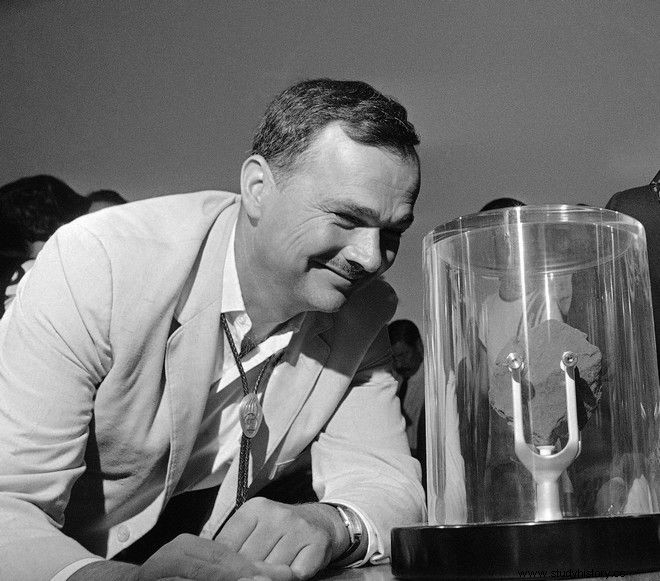In the history of mankind, there are very few people who have set foot on the Moon, but there is also one who has been "buried" in the natural satellite of the Earth.
This is Eugene Shoemaker, an astrogeologist who has worked for NASA since the 1960s and became famous when a comet that crashed into Jupiter in 1994 was named after him (Comet Shoemaker-Levy).
The reason this comet became so famous is because it was the first time in human history that we had the opportunity to see a planetary collision. This fact was mainly reported by Eugene Shoemaker and David Levy, who gave their name to the comet in question.
Who was Eugene Shoemaker
As an astrogeologist he was always fascinated by space and the idea of human colonization of the Moon. He surveyed the planet and prepared astronauts for the type of terrain they would land on. He loved the idea of traveling there but knew it couldn't happen as he was from the "brains" of NASA and not the executive branch. He knew, after all, that he was more valuable as an astronomer and geologist than as an astronaut.
He was very famous in the United States not only because of his intensive surveys of craters across the country but also for founding the US Archaeological Survey program in the 1960s. His knowledge was instrumental in the success of the Apollo missions and other programs of NASA.
In fact, the origin of what is now known as Arizona Crater was uncertain prior to his PhD, in which he addressed the issue. This is the crater where most of the astronauts who participated in the Apollo missions trained, as it was quite similar to the lunar terrain.
The better the astronauts understood the terrain they were about to encounter, the better they could prepare for the future. Getting to the Moon was only half the mission.

Arriving at its final destination
Shoemaker died on July 18, 1997 in a car accident. However, this would not be his last trip. A close associate of his came up with the idea of sending his corpse to the Moon, as he knew this was his big dream. NASA thought this was a great idea to show their appreciation for his work over the years. His body was cremated as transporting his ashes would be much easier than transporting the corpse.
His ashes were loaded onto the Lunar Prospector, a rocket launched on January 6, 1998 with the goal of reaching the South Pole of the Moon. Shoemaker's ashes were inside a special polycarbonate capsule produced by a company that specialized in sending dead people into space but never to the Moon. The outside of the capsule bears his name, date of birth and date of death, as well as a photo of him training astronauts in a geological field.
The Lunar Prospector reached the moon on July 31, 1999. That same day, they dropped the capsule containing its ashes, which landed on the moon, "burying" it in the place it always wanted to go.
Read the News from Greece and the world, with the reliability and validity of News247.gr
